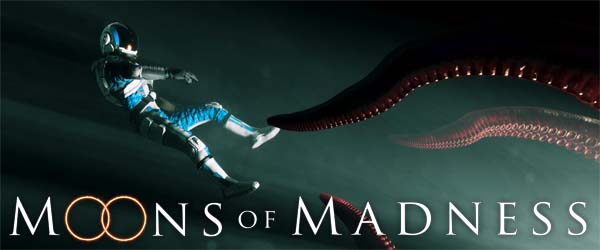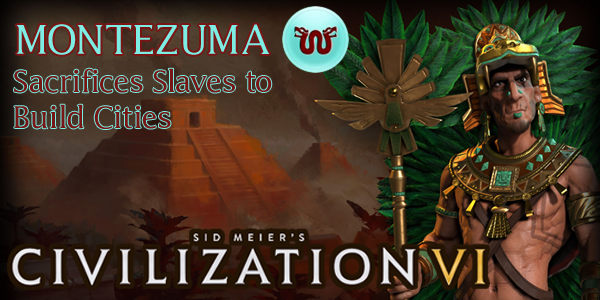
It's hard to make a good Lovecraftian horror game. The key to Lovecraft's horror was the mysterious intractability of his cosmic abominations. It wasn't just that they were ugly or deadly; the horror came from the realization that these monsters were part of a much greater cosmos that humans can barely comprehend, and that we are little more than ants to these god-like beings who could snuff us out of existence at a whim -- if they even cared enough about us to do so. In the century since Lovecraft wrote his stories, Lovecraft's monsters have become so iconic that Cthulhu is pretty much a universally-recognized, cliche monster along with the likes of Dracula and the Xenomorph. The closer a story adheres to Lovecraft's ideas, the more familiar it becomes, and the harder it is to create that sense of being overwhelmed with unfathomable knowledge that drives a person insane.
That is why I think that FromSoftware's Bloodborne is perhaps the best video game adaptation of Lovecraft's concepts (even though it is not a direct adaptation of any of his stories). Bloodborne's esoteric and arcane lore, and the indirect nature in which it communicates its backstory, actually does create that sense that the player is just a small piece of a much larger puzzle that you will never fully comprehend. And the difficult nature of the game means that the player certainly feels like you can be snuffed out of existence at any moment.
Moons of Madness isn't mysterious, or arcane, or particularly threatening. It's cliche and predictable to a fault.
Flatline
I saw almost every plot point coming from a mile away, and if you don't want spoilers, then I suggest you skip ahead to the next section. I didn't expect there to be a full-on underground lab complex akin to Resident Evil 2, but it wasn't something that came off as very surprising considering how telegraphed the corporate conspiracy "twist" was from the start. All the other twists, however, came off as rote and stale. The science experiment gone haywire, the relief ship crashing, the reveals about the protagonist's family history, the multiple betrayals ... none of it came off as even remotely surprising, and the whole game degraded to simply waiting for the next shoe to drop. The game isn't very long, but the predictable nature of its plot made it feel like it was dragging on for much longer than its six-ish hour playtime.
The secret lab was not a surprise and only distracted from the cosmic horror.
Worse yet, the corporate conspiracy stuff ended up distracting from, and drowning out, the Lovecraftian cosmic horror. The monsters don't feel mysterious because they're all the results of experiments being done at the request of the evil corporation. The Lovecraftian temple complex and "dreamers" fall flat because their existence is spoiled much earlier in the game. Heck, the other characters visit the temple and tell you all about it over the radio, while you're fumbling about the silly underground lab, so by the time you get to the temple, it's not mysterious at all. I think the point was to try to convey the awe and wonder of the NPC characters in the hopes that it would instill a sense of awe and wonder within the player, but all I could think was "I'd much rather be playing as those other characters right now!"
When all is said and done, I feel like Observation (despite not being directly inspired by Lovecraft's mythos) pulls off the cosmic horror shtick much better because its alien influences remain mysterious and intractable all the way through the end -- perhaps to that game's fault.
... [More]
942aeb04-c29d-447b-8525-5e4dcfd19326|0|.0
Tags:Moons of Madness, Steam, Rock Pocket Games, Dreamloop Games, Funcom, science fiction, horror, cosmic horror, H.P. Lovecraft, walking simulator, Mars, conspiracy

Now that I've covered all the civilizations which are new to the Civ franchise in the Gathering Storm expansion, I'm going to cover the other civs that my Patrons voted on. I'm going to start with Montezuma of the Aztecs. The Aztecs were included as DLC for the vanilla release of Civilization VI.
The Aztec Empire consisted of a "Triple Alliance" between the city states of Tenochtitlan, Texcoco, and Tlacopan in the Central Mexican Valley basin around Lake Texcoco, based largely around the cultivation of maize. They would subjugate other city states through military conquest, trade, or marriage, and then install governors to administer those client states without necessarily needing to maintain a military garrison. Client states would pay tribute directly to the Aztec emperor, who would limit their ability to communicate and trade directly with other client cities; thus, making each of the clients dependent on the empire for resources and luxury goods and reduce the likelihood of an uprising.

In the early 1500's, Spanish Conquistadors (lead by Hernán Cortéz) arrived in central Mexico and occupied the Aztec capital of Tenochtitlan, keeping Aztec Emperor Moctezuma Xocoyotzin a prisoner in his own palace. Since most of his history is depicted through the lens of the Spanish conquerors, information about Moctezuma's life and rule are limited and contradictory. He ruled the Aztec Empire at its territorial height after several successful military campaigns, and he imposed regressive policies that increased the rigidity of the Aztec caste system and severely limited the ability of commoners to work in royal palaces or ascend to nobility. Contrary to his typical depictions in the Civilization games as a blood-thirsty warmonger, contemporary Spanish writings suggest that Moctezuma may have been rather meek and was accommodating of the Spanish conquistadors, whom he invited to live in the palace as guests. Moctezuma would die during the Spanish occupation of Tenochtitlan, possibly having been stoned to death by his own citizens who were frustrated with his inability (or unwillingness) to repel the Spanish invaders.
DISCLAIMER:
Civilization VI is still a "living game". Strategies for the game (and for specific leaders and civs) may change as Firaxis applies balance patches, introduces new features, or expands the game through further DLC or expansion packs, or as the Civ community discovers new strategies or exploits. As such, the following strategy guide may change from time to time. I will try to keep it up-to-date, and will make notations whenever changes are made. I'll also post links in the official 2K forums and CivFanatics, where I'll also report any changes made. If possible and practical, I will try to retain the original content of the strategy for posterity.
I welcome any feedback or suggestions that readers wish to offer. Feel free to post on the linked forums, or by posting a comment at the bottom of the page.
This guide is up to date as of the release of the Gathering Storm expansion's "Red Death" update (ver. 1.0.0.341)
The Aztecs in Civilization VI are built to be highly aggressive, using the procurement of luxury resources to strengthen their armies and support their vast conquests.
[More]
1ebe4687-7bc0-4a01-9122-2d2756851b2b|1|5.0
Tags:Sid Meier's Civilization, Civilization VI, Aztec, Montezuma, legend of the five suns, gifts for the tlatoani, tlachtli, eagle warrior, tlatoani, luxury, amenity, war, loyalty, builder, slavery
Having dislocated my shoulder a few weeks ago, I haven't been doing much video gaming. I can do some PC gaming on my laptop using my trackball mouse and wireless keyboard (and plan on having a new Civilization VI strategy published real soon), and I also finally started playing Breath of the Wild on the Switch, since the Switch controller is much more comfortable to use with my arm in a sling. I haven't touched the PS4 since the dislocation. I've also been watching a lot more TV and movies.
One such television show has been Netflix's new The Witcher TV series, based on the novels that inspired the video game series of the same name. The Witcher III is a fantastic game that I've come to adore due to its exceptionally well-written and thoughtful quests. But I never played the first two games in the series, nor read the books. So I was looking forward to the TV show hopefully filling me in on more of the backstory and history of these characters and this world.
I just wish that I was having an easier time following along with what the heck is going on in this show, as its plotting and structure seems to be rather muddled.
I'm not even talking about the large, big-picture structure of the show. I followed along just fine with the show jumping back and forth between Ciri's escape from the Nilfgardian invasion of Cintra, and the travels of Geralt that happened in the 15 or so years leading up that invasion. It took me a few episodes to wrap my head around it, but I'm fine with it.
No, what's confusing me is the minute-to-minute plotting and character motivations. There have been numerous times during these eight episodes that I just kind of threw my hands up and asked aloud "what is going on here?". Why are these characters doing what they are doing? And why do so many conversations feel like they are made up of non sequiturs? There's going to be some light spoilers here, so if you haven't watched the show yet, you can maybe skip the next two or three paragraphs.
I found myself very confused as to why certain things were happening.
... [More]
|

| 12 | | | | | | | 60 | | 11 | | | | | | | 55 | | 10 | | | | | | | 50 | | 09 | | | | | | | 45 | | 08 | | | | | | | 40 | | 07 | | | | | | | 35 | | 06 | | | | | | | 30 | | 05 | | | | | | | 25 | | 04 | | | | | | | 20 | | 03 | | | | | | | 15 | | 02 | | | | | | | 10 | | 01 | | | | | | | 05 |
|